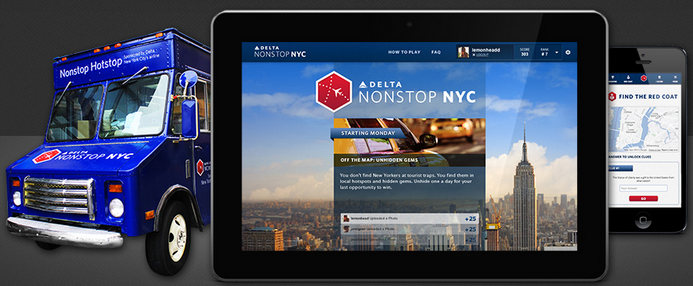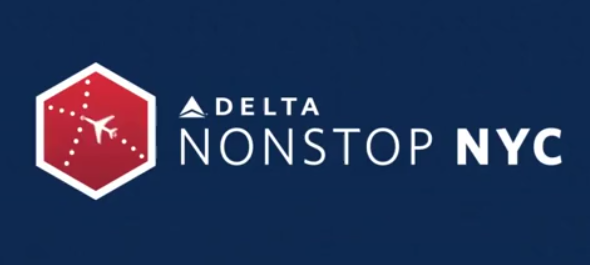Delta Nonstop NYC Wanted to Make New York Home
Few other industries have seen more challenges – and opportunities than the airline industry. The list is long: lines at the airport, higher fuel prices, razor thin margins, the recently-approved merger of American Airlines with UsAir, AMR wrestling with bankruptcy, new online Travel Agencies (OTA’s) popping up almost daily and regulatory changes, to name a few.
Delta Airlines is one of a few that has turned all of these into advantages. The company decided to separate themselves from the rest by focusing their efforts on becoming known as New York City’s hometown airline. They spent over $1 billion redesigning their terminal and they ramped up their flight offerings to and from the city. After all was said and done, the company needed a flashy, fun way to let everyone know they had arrived, and this is where BoomBox came in.
The company came to us interested in using gamification to raise awareness of their commitment to the city and to make an emotional connection with the brand. We at BoomBox wanted to create something that was fun, exciting, engaging, and that used our signature mix of behavioral, neuro-, and game science. The game had to make sense for Delta, in regards to their newly-strengthened presence in New York City and otherwise.

We came up with the “Delta Nonstop NYC” program, a six-week sustained social campaign that combined all three that would make a lasting impression on everyone who played. We based the game around the red coats–Delta’s signature flight attendants. The game mixed social, web, mobile, and the thrill of searching around New York City for clues and prizes. The game consisted of:
- Players visited custom websites (engagement hubs) to uncover new clues that would help them find their famed red coats – one of their key differentiators of service excellence.
- Each player would race to be the first to find a red coat after a clue had been revealed online.
- There were weekly game announcements via social media platforms, which players were encouraged to share with their networks.
- Players could boost their scores by checking in at Delta properties (terminals, lounges) and other relevant locations throughout NYC.
- Users would engage with Delta daily not only by going on missions and searching out clues, but also by simply interacting with the company on social media platforms.
In the end, the “Nonstop NYC” campaign was a complete success. By the time the game was finished, we had racked up almost 190,000 interactions. There were almost 7,000 mentions of the hashtag “#nonstopnyc”. The total estimated reach on Twitter was over 70 million people, and we ended up securing 60% more users than we had originally thought. Delta’s ticket sales out of New York rose dramatically, and we ended up winning three Webby Awards.
While our players were having fun checking in and sharing clues, they were also interacting with the Delta brand every day–more often than not several times a day. Every bit of the campaign was geared not just to the name or logo of the company, but to the qualities that the brand stands for. Each person’s sustained engagement with Delta resulted in a greater interest in the company, and now those involved are more likely to think of them when making their next airline purchase. Delta could have blown their entire advertising budget and they wouldn’t have come close to the results they were met with by the finish of the campaign.
John Hendricks is the CEO and founder of BoomBox, Inc., a digital engagement company based out of New York City.









Nice article!
worth reading